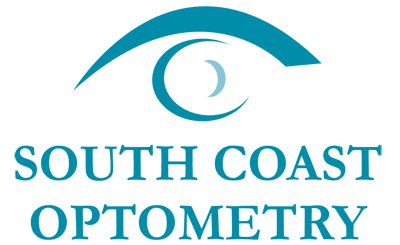 Researchers have already established several known risk factors for developing dry eye syndrome: the quality of your tears, excessive screen time, air pollution, hormonal fluctuations, aging, certain medications and medical conditions, and even one's gender (females are more prone).
Researchers have already established several known risk factors for developing dry eye syndrome: the quality of your tears, excessive screen time, air pollution, hormonal fluctuations, aging, certain medications and medical conditions, and even one's gender (females are more prone).
Here’s another risk factor that’s recently been added to the list: having asthma.
Asthma is a disease of the lungs that affects about 300 million people around the globe. Symptoms include wheezing, chest tightness, coughing and breathlessness.
Fortunately, asthmatic patients are usually able to do the activities they enjoy by taking prescription medications that facilitate easier breathing.
But medical professionals have noticed that individuals taking these medicines, and sometimes even asthmatic patients who don’t, have a higher incidence of dry eye syndrome.
If you have asthma or any other risk factors for dry eye syndrome, let your eye doctor know. The eye care professionals at South Coast Optometry can identify the underlying cause of your dry eye symptoms and provide you with lasting dry eye relief.
What is dry eye syndrome?
Dry eye syndrome occurs when the eyes consistently lack proper lubrication, either due to insufficient tears or tears that lack essential oils.
Here's a list of the common dry eye symptoms:
- Burning, gritty or itchy eyes
- Eye dryness
- Red or painful eyes
- Blurred vision
- Stringy mucus around the eyes
- Light sensitivity
- Difficulty or inability to wear contact lenses
- Feeling that something is stuck in your eye
What Causes Dry Eye Syndrome?
Most cases of dry eye syndrome result from the dysfunction of the meibomian glands in the eyelids, which produce the vital oils needed for healthy tears, and which reduce tear evaporation. But dry eyes can also be caused by some autoimmune diseases, hormone replacement therapy, certain medications and, it appears, asthma or the medications that treat it.
Environmental factors that can bring on dry eye syndrome include exposure to wind or airborne irritants, pollution, infrequent or incomplete blinking (people blink less when they use digital devices), heating, air conditioning and dry weather. Certain makeup products, including mascara, and application methods such as applying makeup on the eyelid margin, can block the glands that lubricate the eyes.
Can Dry Eye Syndrome Be Cured?
There is now a wide range of treatment options that can successfully manage your dry eyes. The key is to allow us to find and target the underlying cause of your condition, so we can create a plan to minimize and sometimes eliminate your dry eye symptoms.
What’s the Link Between Asthma and Dry Eye Syndrome?
Several studies have examined the relationship between asthma and dry eye syndrome and found that although a link exists, researchers aren’t sure exactly why.
One study, published in BMJ Open (2019), found that asthmatic people of Australian, Caucasian and Asian descent have higher rates of dry eye syndrome than those without asthma.
Another study, published in Medicine (2020), established a significant link between asthma and dry eye syndrome, and found that children with asthma tend to have an unstable tear film — a common cause of dry eyes.
One hypothesis is that asthma medications, like inhaled corticosteroids, oral antihistamines and leukotriene receptor antagonists may contribute to eye dryness by inhibiting tear production, but further research is needed.
Could asthma itself be the culprit? Possibly, but more research is needed for a better understanding. What is known, however, is that having low blood oxygen levels caused by severe asthma can deprive the front section of the eye (the cornea) of oxygen, potentially leading to dry eye syndrome.
What’s the Bottom Line?
Research shows that having asthma may increase your risk of experiencing dry eye symptoms.
If you have asthma, speak with your optometrist about lowering your risk of developing dry eye syndrome and make sure to bring all of your asthma medications to your next eye exam.
If you already have certain symptoms of dry eye syndrome, promptly contact South Coast Optometry to schedule a dry eye consultation. We’ll create a personalized treatment plan so you can enjoy long-term relief.
Our practice serves patients from Costa Mesa, Orange County, Newport Beach, and Irvine, California and surrounding communities.
Q: What at-home remedies can relieve dry eye syndrome?
- A: Make sure to stay hydrated and wear sunglasses whenever outdoors. If you use an indoor heater or air conditioner, direct the airflow away from your face. Use a humidifier at home and at work. You can also try using a warm eye compress. Ask your eye doctor for instructions on how to do so. But keep in mind that trying to manage dry eye syndrome without seeing a dry eye optometrist won’t be as effective.
Q: How is dry eye syndrome treated?
- A: The type of treatment depends on what’s causing the symptoms. For example, if premature tear evaporation is the problem, your optometrist may prescribe eye drops. Or if your meibomian glands aren’t functioning as they should, unclogging the glands may do the trick. Medicated eye ointment or drops may be prescribed, or we may recommend certain in-office dry eye treatments. Each treatment plan is carefully formulated with your eyes and lifestyle in mind.
